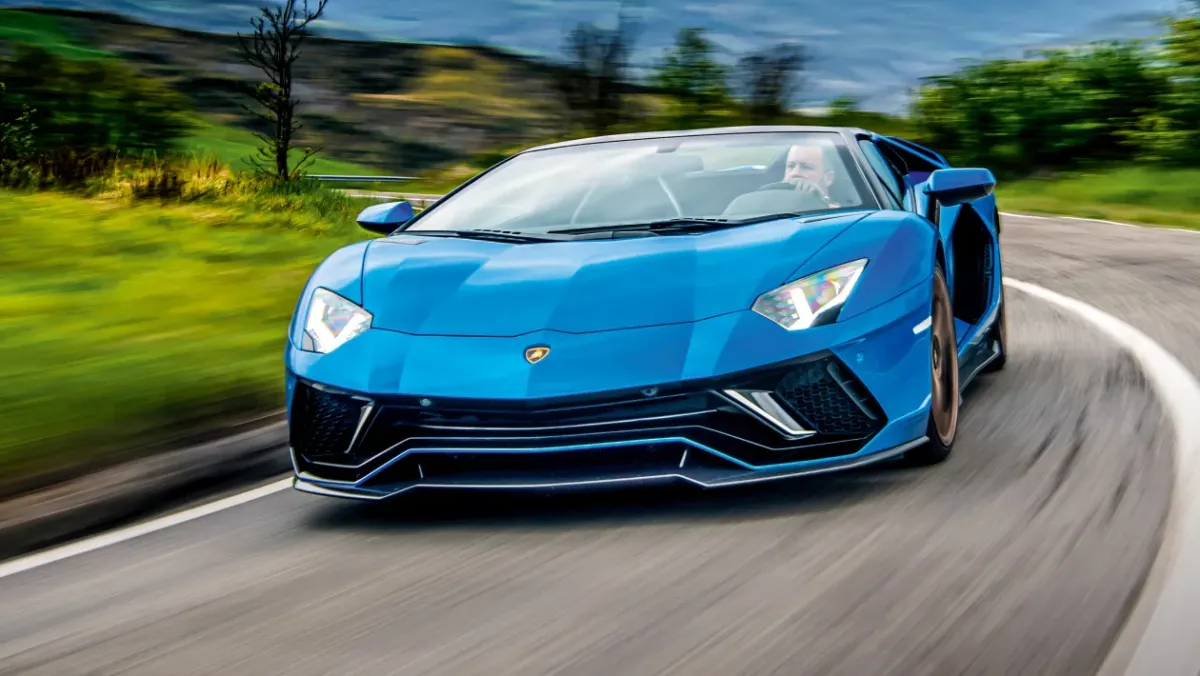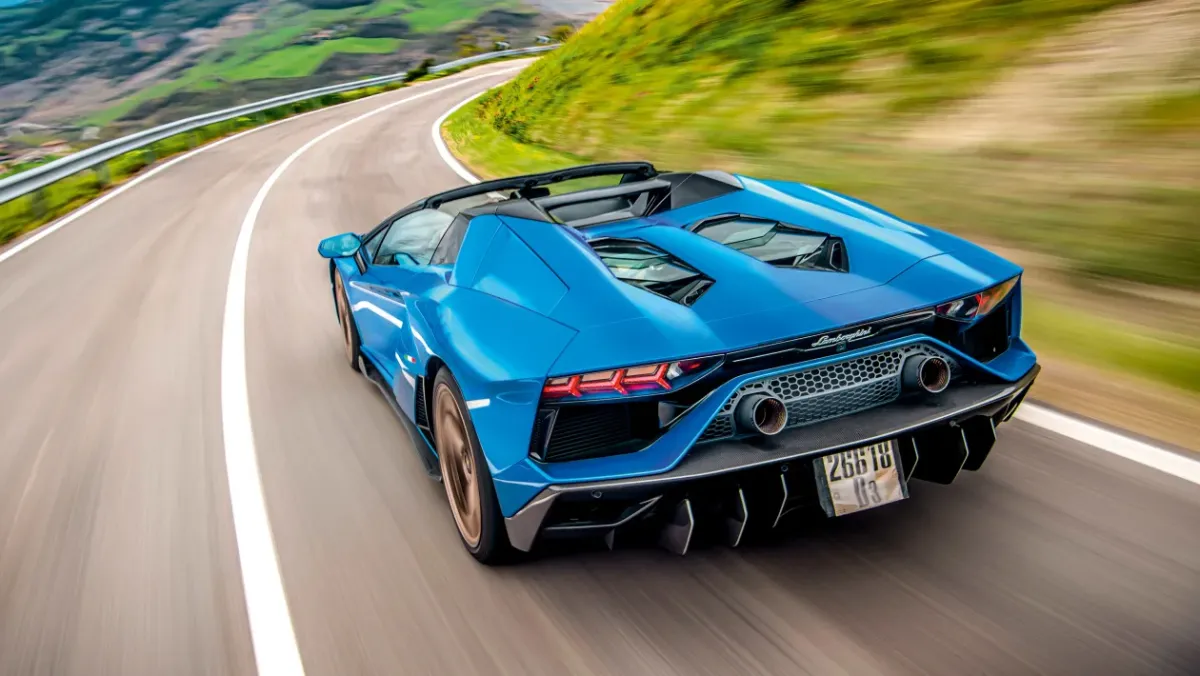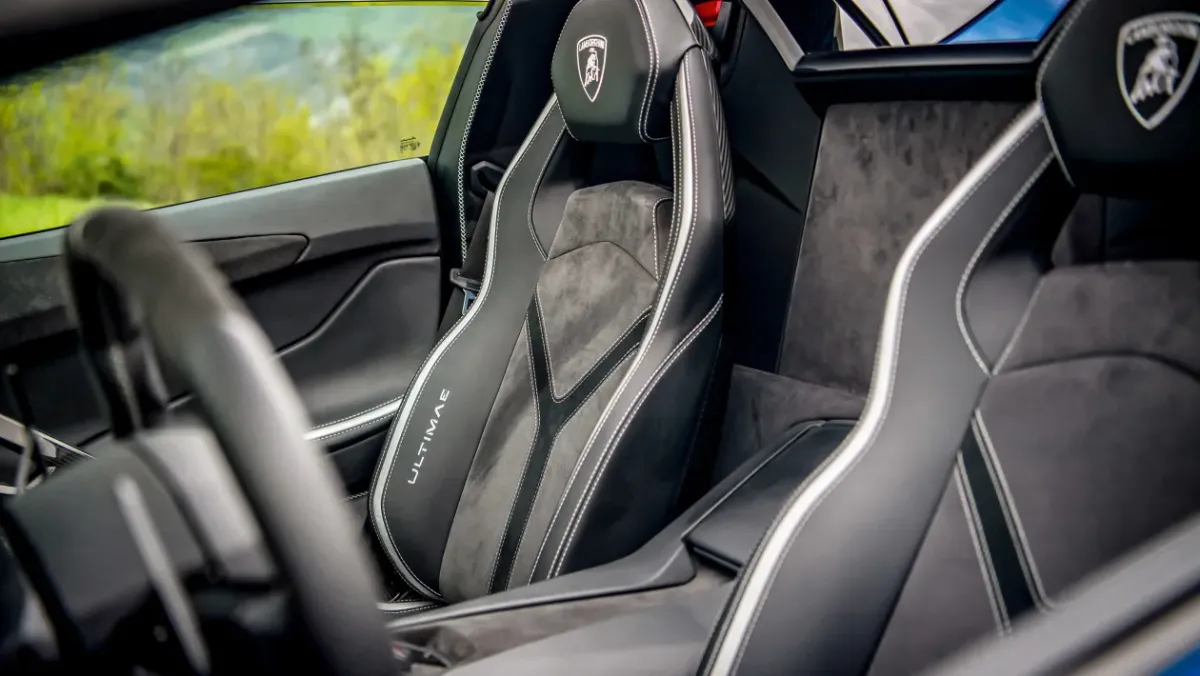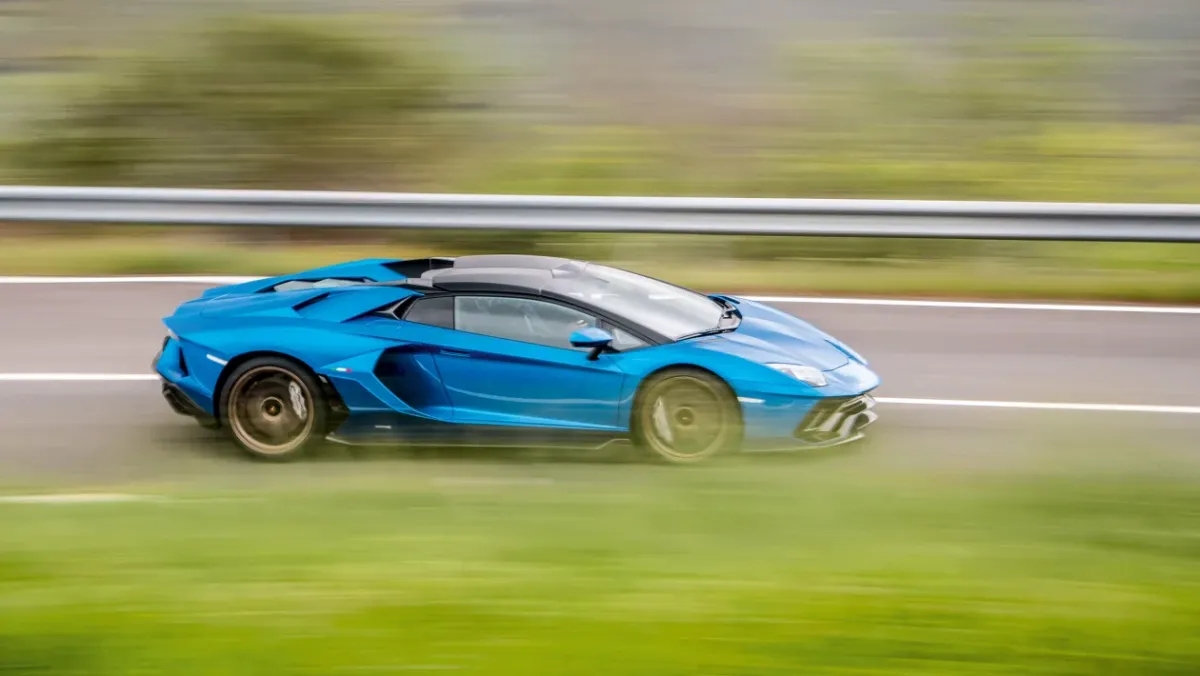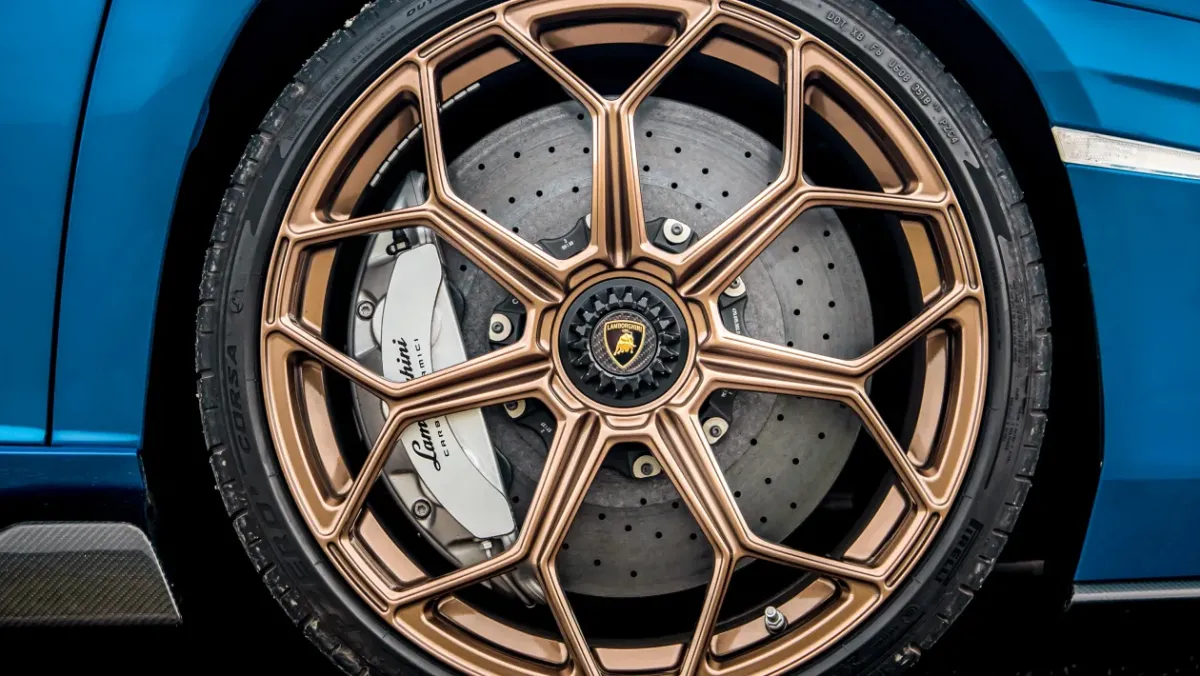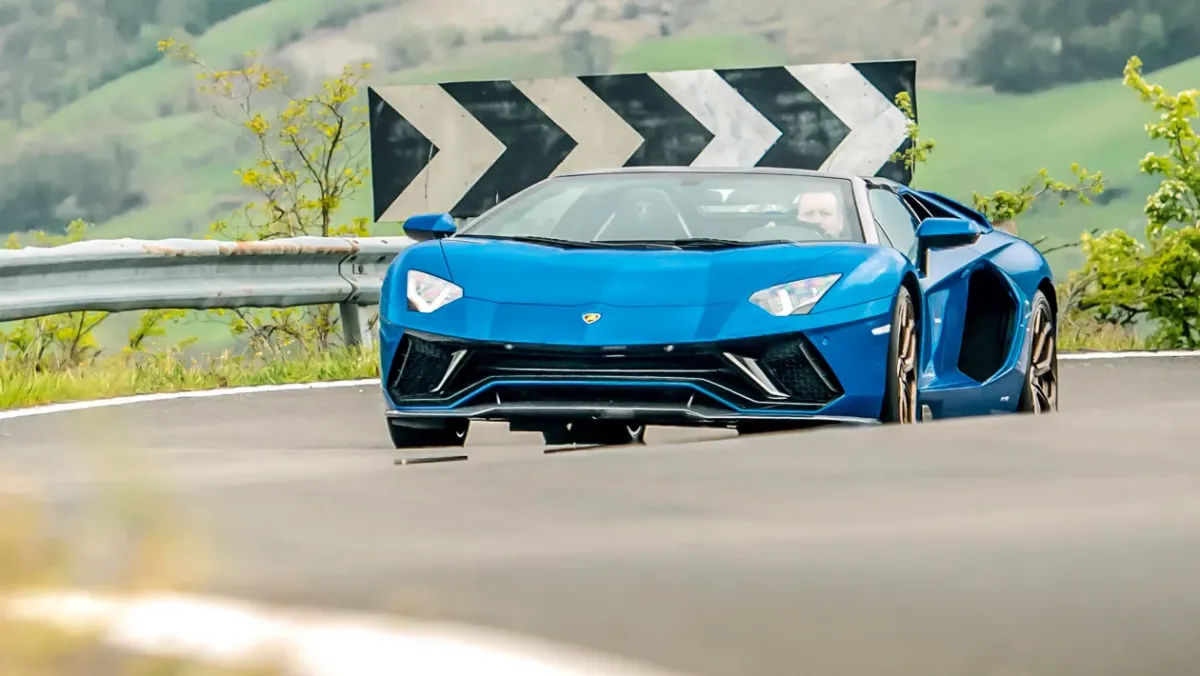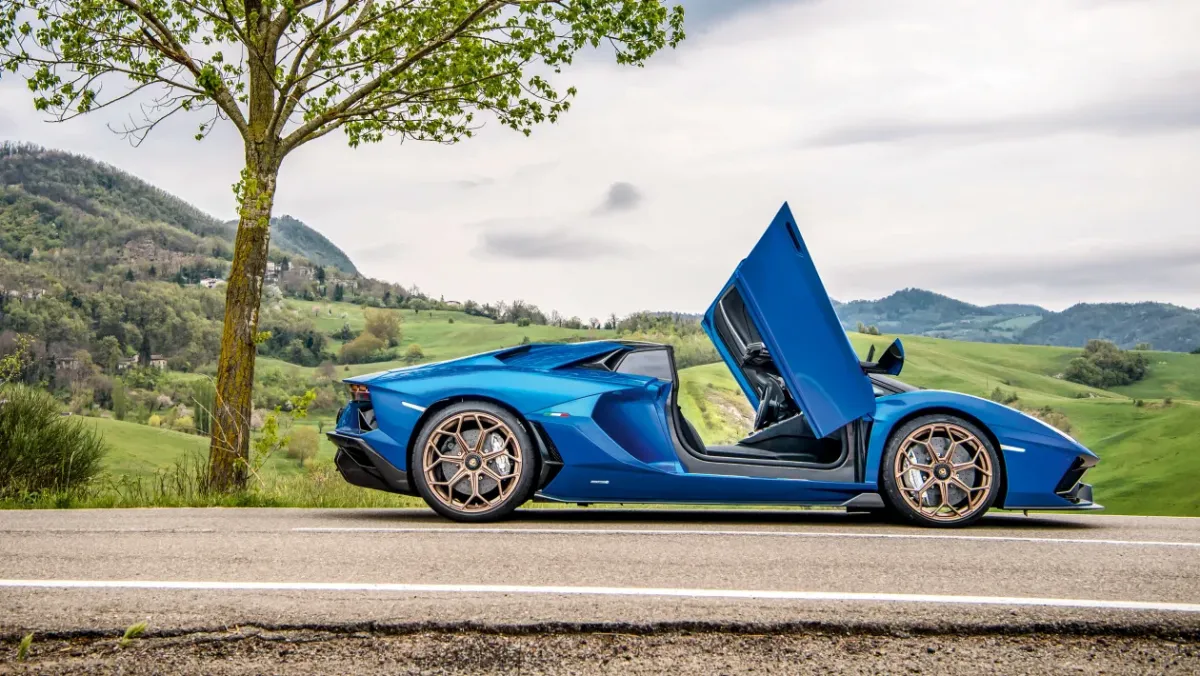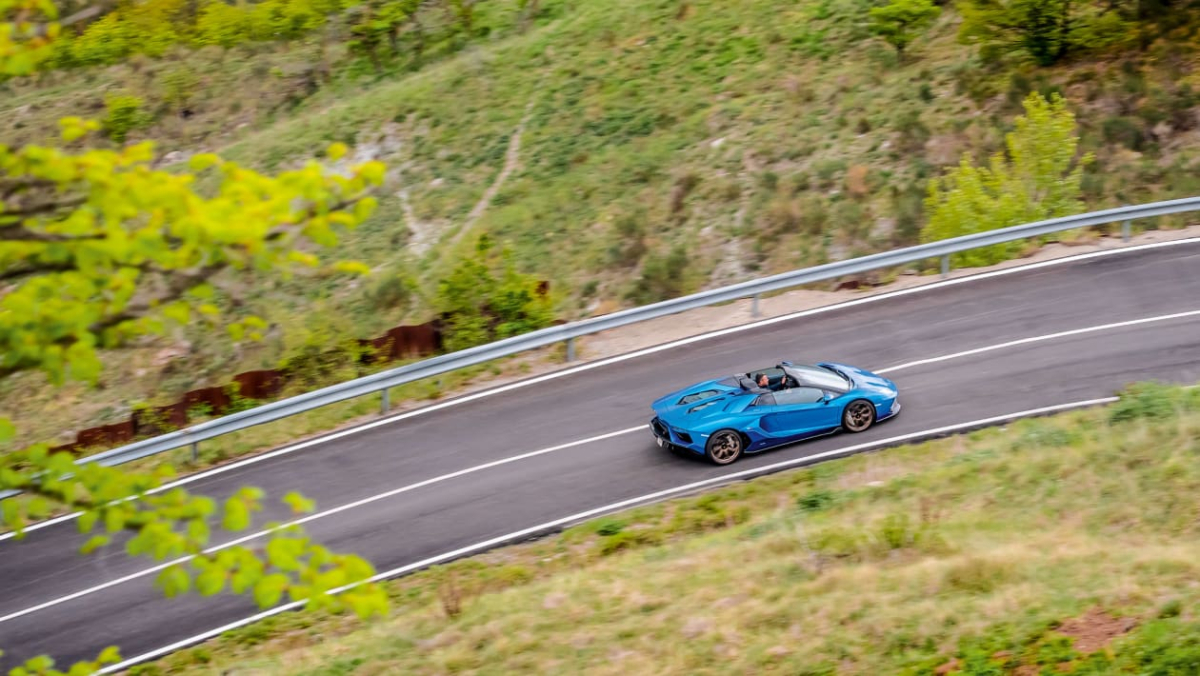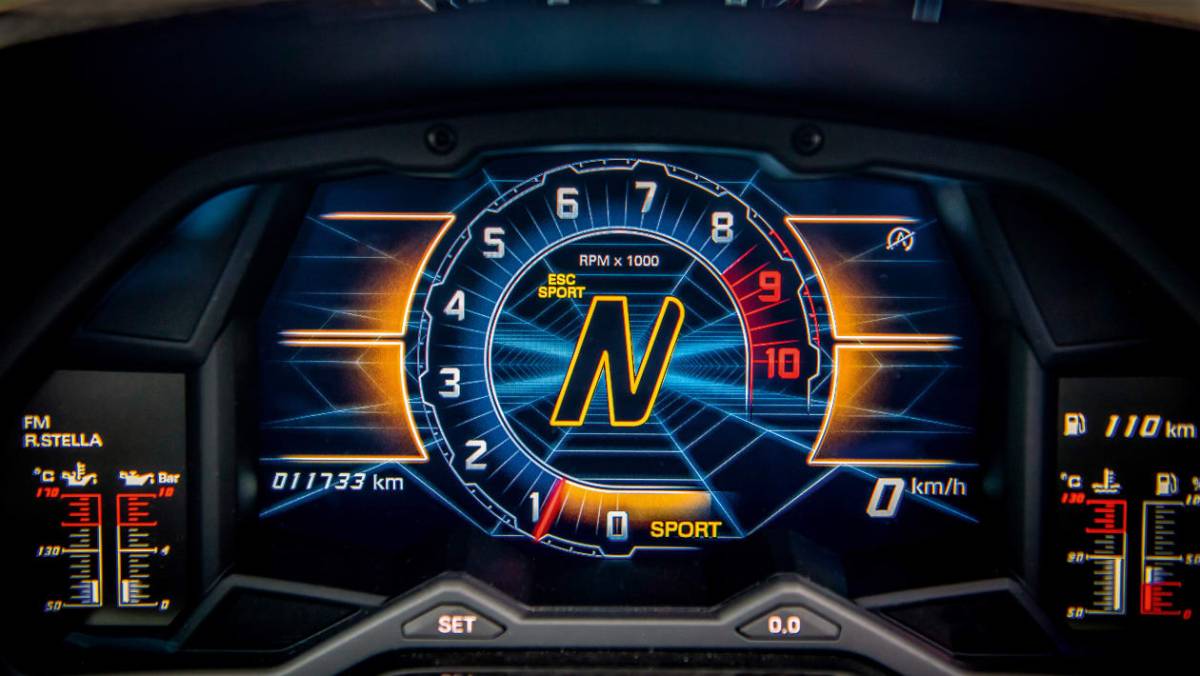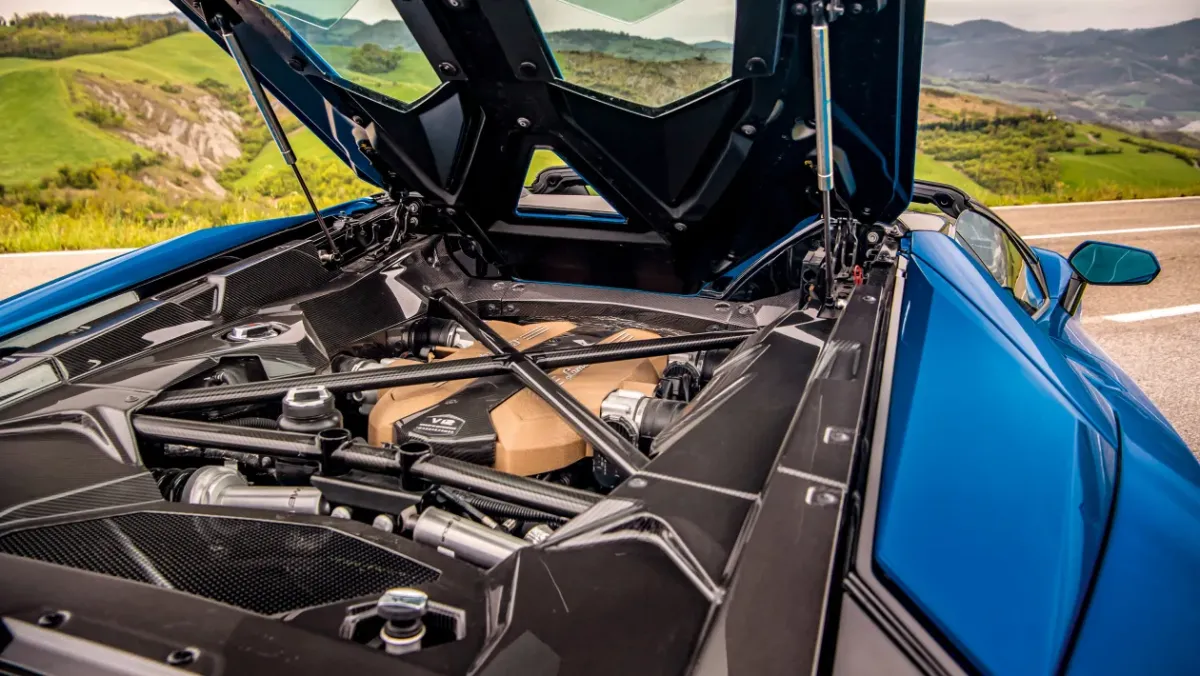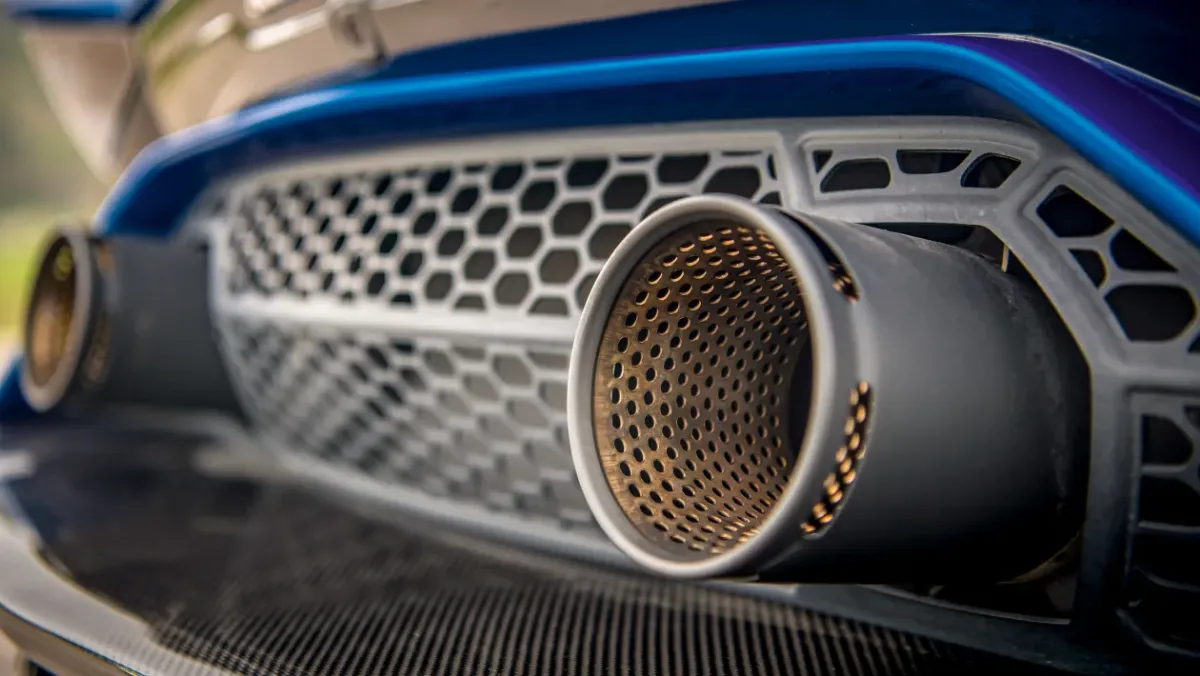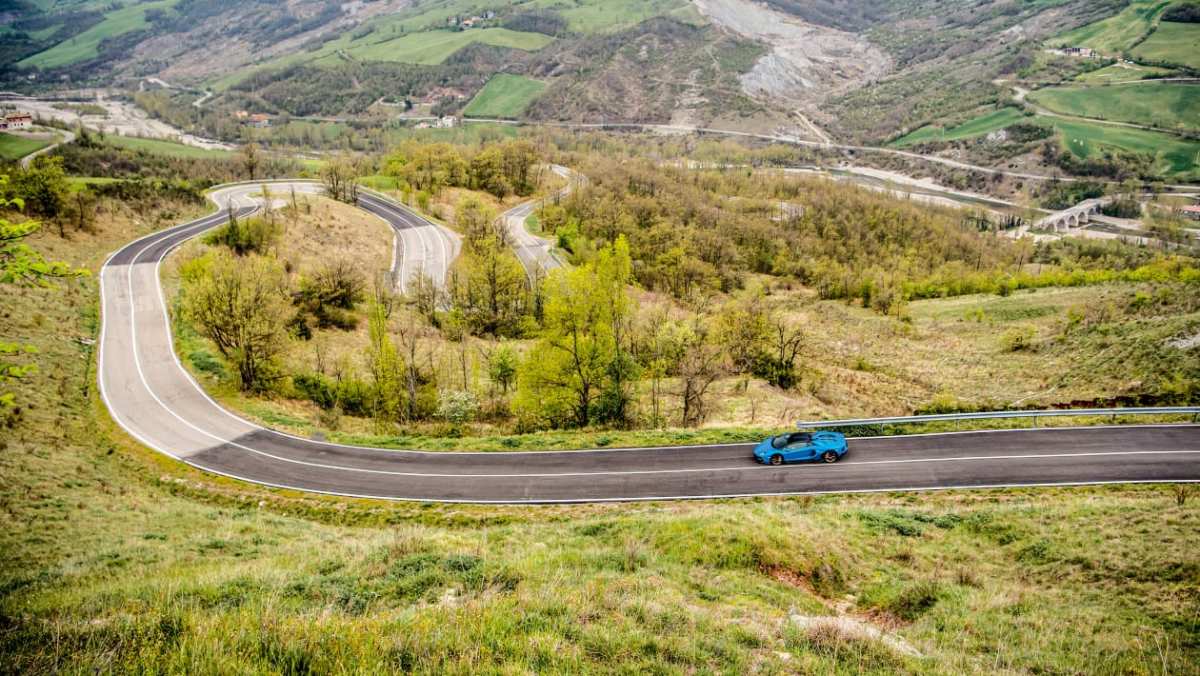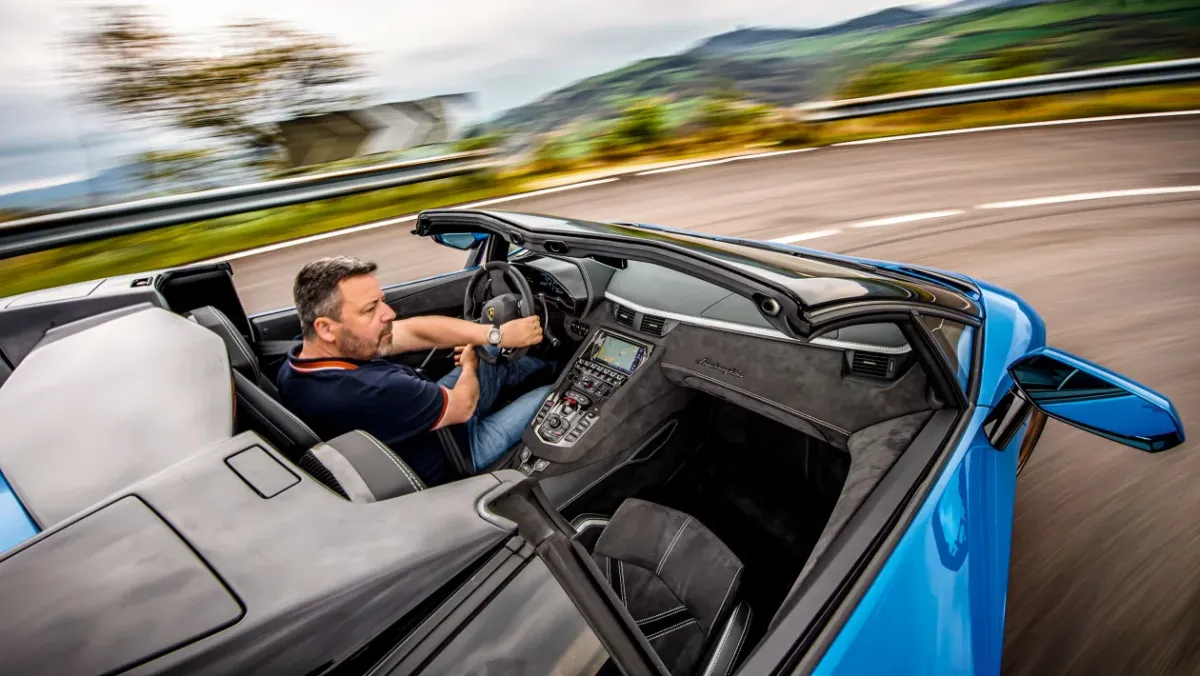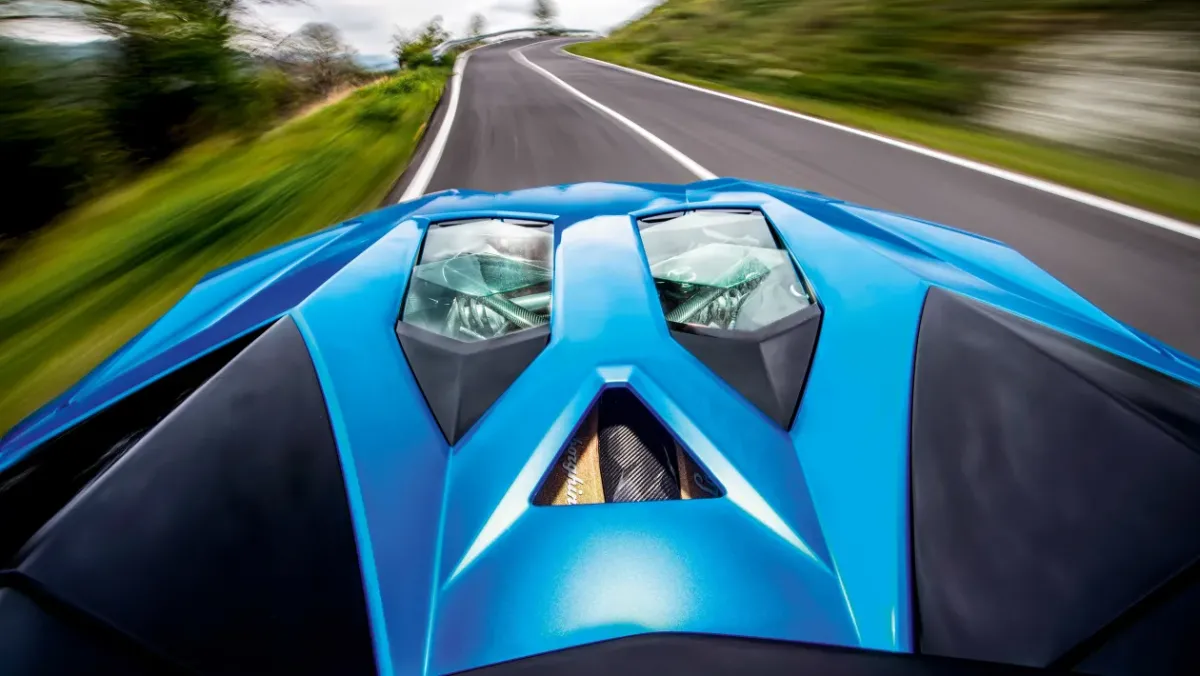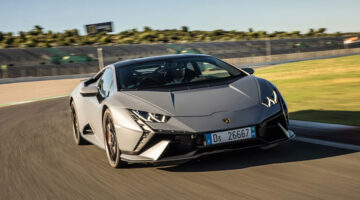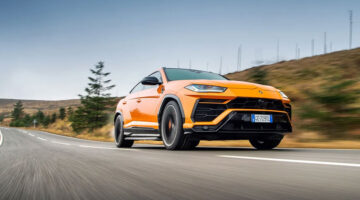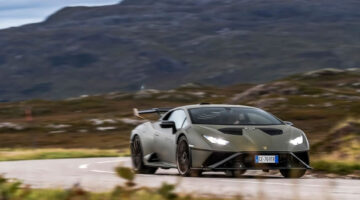It’s a sad day as the traditional V12-engined Lamborghini approaches the end of the road. But what a way to go. The Aventador Ultimae is the most powerful non-hybrid Lambo ever, and it’s one of the best too
| Old-school appeal | surprisingly supple in Strada | the most powerful NA Lamborghini ever | |
| Ageing single-clutch transmission | feels half a size too big for tighter roads |
The raw appeal of a purebred V12 begins way before the moment it barks into life. If you’ve ever been the one to turn the key or press the start button, you’ll know the mix of excitement and anticipation that fizzes through your gut. Likewise the adrenaline that sparks around your central nervous system when you squeeze the throttle to its stop. An experience that transcends driving mere mortal machinery, uncorking a V12 is something you never forget and will never get enough of.
Lamborghini knows this better than anyone. Even better, dare I say it, than Ferrari. Both company’s founders understood that having V12 engines with their names cast proudly into the cam covers bestowed their cars with status, technical prowess and abundant performance. Today, some 75 years since Ferrari set up shop and almost 60 since Ferruccio did the same in order to build better road cars than Enzo, epic 12-cylinder engines remain integral to both marques.
Ferrari famously channelled his company’s efforts into attaining immortality through extraordinary racing achievements. It’s the glow from these countless wins in which all Ferrari road cars have since basked. Lamborghini deliberately (and wisely) swerved motor racing, but not only did his first effort – the gorgeous 350 GT of 1964 – feature a V12 designed by the brightest engineers of their (or indeed any) era, but just two years later he effectively invented the mid-engined supercar with the sensational Miura. Ferrari fought back over the decades, but Lamborghini perpetuated its position as the pre-eminent purveyor of extraordinary exotics with an unbroken bloodline that continued through Countach, Diablo and Murciélago to today’s Aventador.
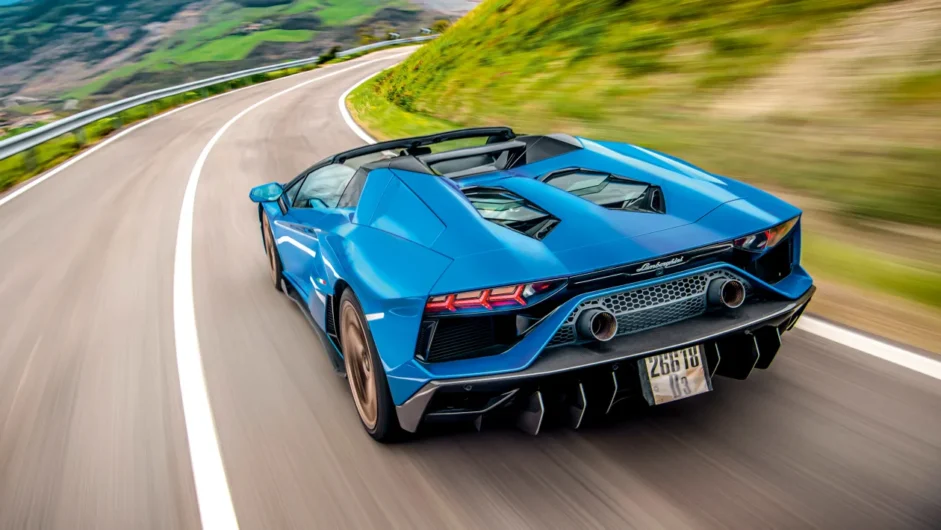
These are difficult times for supercar makers. The halcyon days of Enzo and Ferruccio went long ago, but the party they started has lasted for generations. In fact, it wasn’t until the last handful of years that time was called and car makers faced planning for a fully electrified future. Most will cling on to piston engines for a while via the adoption of some form of plug-in hybrid (PHEV) system. E-fuel could yet throw internal combustion engines a lifeline, but with so much at stake, car companies – even legendary Italian ones – cannot rely on some last-second salvation for ICE.
What does this mean for Lamborghini? Well, as soon as next year we should see an all-new Aventador replacement featuring a PHEV V12 powertrain. This will be closely followed by PHEV Huracán and Urus replacements. After that, Lamborghini has its first fully electric model planned, and likely to break cover before 2030.
The party’s not over quite yet, though, as evidenced by the Aventador LP780‑4 Ultimae. As its name suggests, this is something of a requiem for the pure, shock-and-awe petrol-powered Lamborghini flagship. And, as you might expect, it has proved popular. So popular, in fact, that all 600 cars – divided between 350 coupes and 250 of the Roadster driven here – have already been sold. We certainly didn’t need asking twice to make the trip to Bologna for a drive.
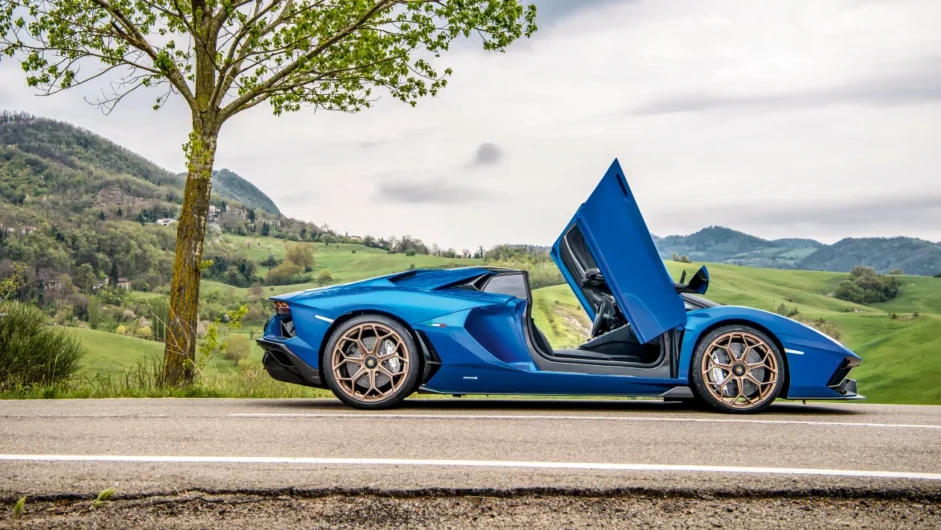
Just like Ferrari’s home town of Maranello, Sant’Agata has acquired the sanctity of holy ground. I haven’t been here for at least a decade and much has changed, though pleasingly the factory – proudly topped by a huge sign written in unmistakable L-a-m-b-o-r-g-h-i-n-i script – still seems to appear by surprise as you drive along the busy Via Modena and in through the gates.
After a typically warm welcome and a very long lunch, we get our first glimpse of the Ultimae. The Aventador has been around for a while, but it’s still a startling sight. Waist high but comfortably over 2m wide, it’s every bit the bedroom poster car. Clipped of the wilder, track-focused SVJ’s aggressive aero kit, there’s no ALA active aerodynamics, but this somehow lends the Ultimae more old-school appeal. Impossibly dramatic but spared the try-hard visual tricks of a quasi race-car, its clean lines accentuate the impact of this incredible piece of sculpture.
Since Lamborghini embraced racing by joining the lucrative world of GT3 customer racing with the Huracán, it hasn’t been shy in building road cars that tap into the extreme track-honed sector. The Aventador SVJ and Huracán STO both revel in their roles as hardcore headbangers, but Lamborghini has also become something of the master at combining absolute power with (slightly) toned-down looks and more supple road-biased dynamics. Think GT3 Touring turned up to 14.
The Ultimae is a perfect example. At its heart is a ferocious evolution of the SVJ’s dry-sump 6.5-litre 48-valve V12. Boasting 769bhp and 531lb ft of torque, it adds 10bhp to the SVJ’s tally, making it the most potent Aventador of all and the most powerful naturally aspirated Lamborghini ever.

Mating this V12 to the familiar single-clutch seven-speed paddleshift gearbox and all-wheel drive, the Ultimae shuns the SVJ’s Nürburgring Nordschleife record-setting suspension in favour of a milder set-up mirroring that of the Aventador S. All things are relative, mind, so this still means super-trick pushrod suspension with adaptive dampers that respond to driver-selectable dynamic modes, plus the stiff carbon monocoque and massive carbon brakes that made the Aventador such a quantum leap over the steel lattice-framed Murciélago it replaced in 2011.
Much as Lamborghini understands the magic of the V12, so it consistently nails the joy of theatrical supercar doors. If you don’t beam with childish glee when you tuck your fingers into the hidden recess of the release button and pull the scissor door skywards, then you really don’t deserve your shot behind the wheel.
It’s actually easier to drop into the cockpit than you might imagine, though managing it in one smooth, nonchalant shimmy requires a bit of practice and well-oiled hips. Once in, you’re treated to one of the great driving vistas, the impossibly raked windscreen arcing back for kilometers and the vast dashboard seemingly pushing you way back in the cockpit.
You sit low, but because the screen is so vast and the scuttle relatively shallow you still get a nice view of the sharp creases that mark the tops of the front wheelarches. Likewise, the side windows start high at your shoulders but cut low into the doors as they dive towards the mirrors, so forward and lateral visibility isn’t as restricted as you might think. Those endless A-pillars can make spotting apexes difficult, but it’s the kind of impediment I’m prepared to live with if it means a car can look as crazy as this one.
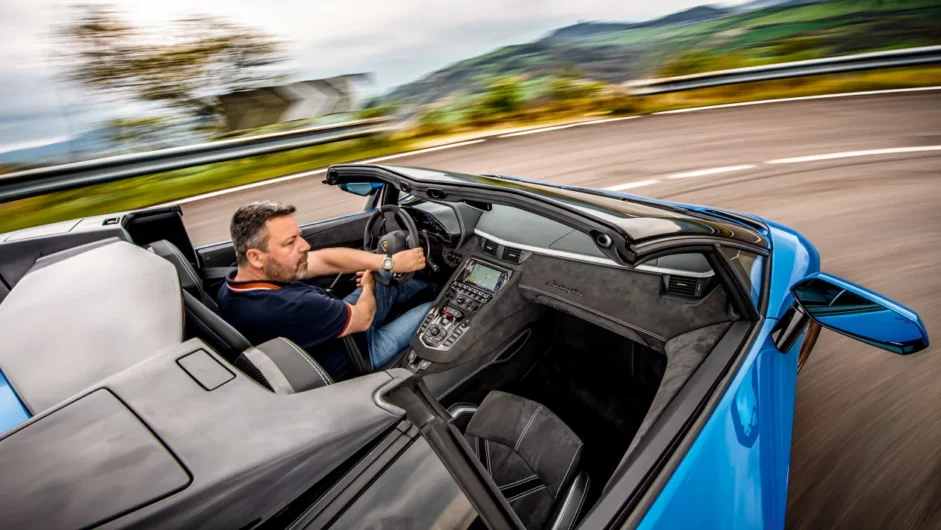
Glancing in those extravagantly faceted door mirrors reveals the broad rear haunches swelling to cover the fabulously wide rear wheels. You don’t quite feel like you’re sitting at the pointy end of an arrowhead as you did in a Diablo, but it’s still one of the more intimidating machines to thread through a gap.
You might be inclined to scoff at the missile launch button-style starter complete with its red flip-up guard, but it’s a bit of fun and certainly doesn’t diminish from the feeling of excitement every time you press it. The starter motor spins with a chirrup before those 12 cylinders fire in turn, 1-12-4-9-2-11-6-7-3-10-5-8, an initial whoop of revs quickly settling into a busy gnashing of pistons and pulleys and a rush of spent gases.
Mounted just behind your back, the Aventador’s motor is a gruffer, grittier character than the equivalent front-engined Ferrari V12. It has greater presence, a cockpit-filling cacophony that has echoes from the past, overlaid with the kind of searing response to throttle inputs that makes your palms perspire with anticipation.
Dab the brake, flex your right fingers to pull back on the long-eared shift paddle, squeeze the throttle and away you go. Those of us old enough to recall the calf-quivering clutch weights of its forebears might find the effortlessness with which the Ultimae gets underway a little too easy, but the ageing single-clutch transmission requires a bit of mechanical sympathy to give its best.
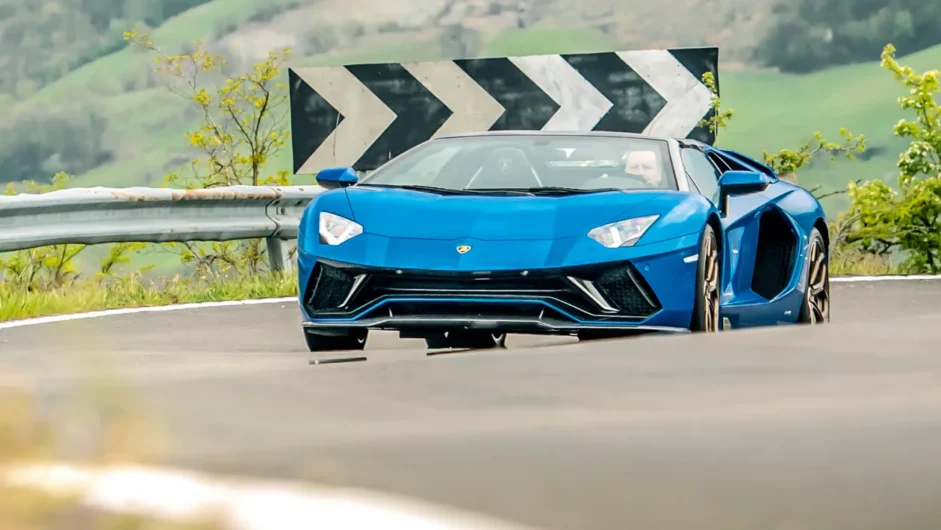
For starters, don’t be tempted to let it do its own thing at low speeds, for the upshifts are strangely hesitant in auto. Better to bat up and down through the gears manually for much improved shift quality. And if you’re driving with wider throttle openings, a fractional lift as you flip for the next gear works wonders. A double-clutch ’box is unfailingly, metronomically precise, but while it can be jerky and frustrating at times I have to say the challenge of doing your bit to help the Ultimae’s gearbox shift more sweetly is really rather satisfying.
Heading out of Sant’Agata towards central Modena takes me back to the first time I came here some 27 years ago, funnily enough to drive another blue Roadster, the Diablo VT. You’d think the locals would have got used to seeing Lambos, but there’s still the waves, smiles and cavalcade of swerving moped riders who can’t help but show their appreciation for the Ultimae. The passion is real.
Loping between the vineyards and the wide open fields, the Ultimae feels surprisingly supple in Strada mode. It’s refined and restrained in the way it covers the ground. There’s a maturity to the way it rounds off bumps that makes it a pleasure to guide, and though subdued compared to its full cry in Corsa or Ego modes, the engine has an epic sense of potency without breaking sweat. As we’re to discover, there’s little need to stray beyond Sport mode, which brings as much firmness to the suspension as is useful on real – that’s to say variable quality – road surfaces.
In many ways this is the unsung thrill of driving a car like the Aventador. Yes of course we all love the idea of yelping along at near 9000rpm, but these big V12s haven’t always been bombastic blabbermouths. Sometimes to truly appreciate the true scale of a car’s performance you need to make impressive progress while using a small fraction of its potential. Like an active volcano with a whisp of smoke curling from its cone, you don’t need a full-scale eruption to be awed by what the Aventador has at its disposal.
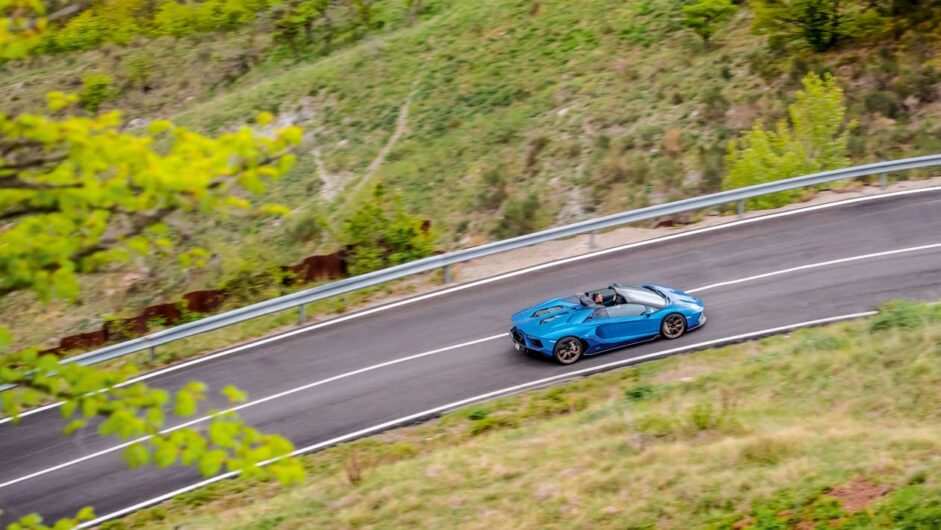
We rumble our way out of the city, heading into the hills to the south. This is Ferrari country, but doubtless generations of Lamborghini have also raided these roads, howling up the inclines and scything through the switchback turns which snake from Ponte Simone to Vignola, or west towards Serramazzoni.
Truth be told, the Ultimaec. With more time we’d counter the confines of these otherwise fantastic roads with a spirited blast down the motorway, but sadly gone are the days when you could point a fast car down the A1 autostrada, pin the throttle and receive little more than a knowing smile from the carabinieri. Which is a great shame, as it would surely be a fine way to experience the outer reaches of the Ultimae’s 354kph performance envelope.
But it’s no hardship firing up and down this familiar network of fast, photogenic roads upon which evo has been testing the latest Italian metal since issue 001. First surprise is just how wieldy this Aventador feels. Yes, it’s wide enough that you involuntarily breathe in when a car comes the other way, but in terms of pure placeability you can pretty much smack the Ultimae’s nose into any apex with pinpoint accuracy. There’s a megaton of grip, with traction to match, but this would be wasted if you didn’t have the confidence to exploit it.
Of course it takes a while to really lean on the lateral grip, likewise squeeze into the available traction, but with every turn you begin to sense that this is a car that demands respect but does nothing to intimidate. Key to this is the steering, which is quick yet calm, with response that’s both proportionate and consistent with your inputs. Thanks to the nicely judged rear-wheel steer you never feel you need to introduce more energy into the initial rotation with a speedier than usual steering input, yet nor do you find yourself nibbling away at the corner because you’ve got more response than you wanted.

It’s unlikely you’ll ever work beyond the grip of the front or rear axle more than momentarily, at least on the road, but if you do manage to heel it into a corner with enough pace it feels remarkably neutral. With its low-mounted dry-sump motor, the Aventador put paid to the somewhat pendulous physics of a Diablo or Murciélago being worked hard through a series of corners.
I’m trying to imagine what a McLaren 720S or 765LT would be like along this same stretch of road. Quicker, sharper and lighter on its feet, certainly, but the glorious, goggle-eyed way in which all Woking missiles fly has never fully compensated for the missing four cylinders, lack of absolute throttle response and a somewhat industrial soundtrack. This Lambo offers what all Lambo flagships have offered: the full IMAX supercar experience.
The reach and intensity of the Ultimae’s powertrain has to be felt – and heard! – to be believed. On roads like these it takes concerted effort and a hard swallow to chase the red line in third gear. Often your brain is telling you ‘that’s enough’ when a glance at the tacho reveals you’ve got another 2000rpm to use. The noughties might have called wanting its upshifts back, but in some ways each brutal pause-punch offers a split second in which to gather your faculties and steal a breath. It would be easier to forgive if only it didn’t make the car stumble at the crucial moment.
Downshifts are far more pleasing, not least because you get a whoop of revs and an explosive paradiddle of percussive pops and bangs as you stand the Ultimae on its pointy nose under heavy braking. The carbon discs and huuuuge calipers look sensational set behind the spidery spokes of the alloy wheels. Brake feel is generally good, which makes them easy to modulate despite a little more initial travel than you’d like. Big stops are almost as physical as full-bore acceleration; if you were inclined to make like Bob Wallace and go in search of front-end lift along the autostrada, you’d have no worries stopping for the toll booths.
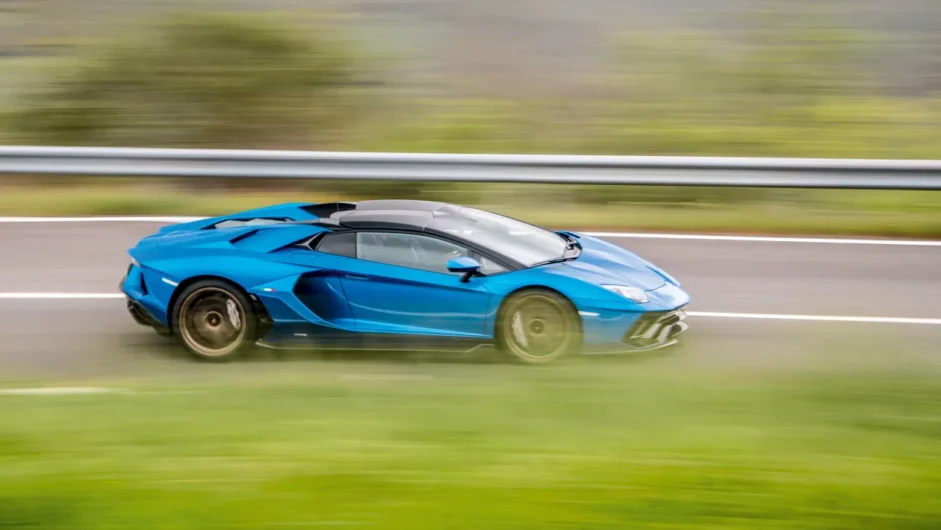
The only chink in the Brembos’ armoury is on those hill roads, where repeated fast descents bring an inconsistency to the pedal travel that can momentarily catch you out. It’s not full-blown fade, more like a combination of heat build-up and possible pad knock-off due to the rough nature of some of the tarmac, but it does serve to remind that even the best modern braking systems have their limits.
Though it marks a moment in automotive history many of us hoped would never come, there’s nothing melancholy about the Ultimae. It’s a celebration of a breed of car that has enlivened our lives for generations. As such it embodies the unique wonderstuff from which Lamborghini has always fashioned its uniquely special machines. It’s unlikely we’ll see it’s like again, but Ferruccio’s legacy will sustain us through whatever the future holds.
Lamborghini Aventador Ultimae specs
| Engine | V12, 6498cc |
| Power | 769bhp @ 8500rpm |
| Torque | 531lb ft @ 6750rpm |
| Weight | 1600kg (dry) |
| Power-to-weigh | 488bhp/ton (dry) |
| 0-100kph | 2.9sec |
| Top speed | 354kph |
| Basic price | $357,000 |
This article originally appeared at evo.co.uk
Copyright © evo UK, Autovia Publishing

